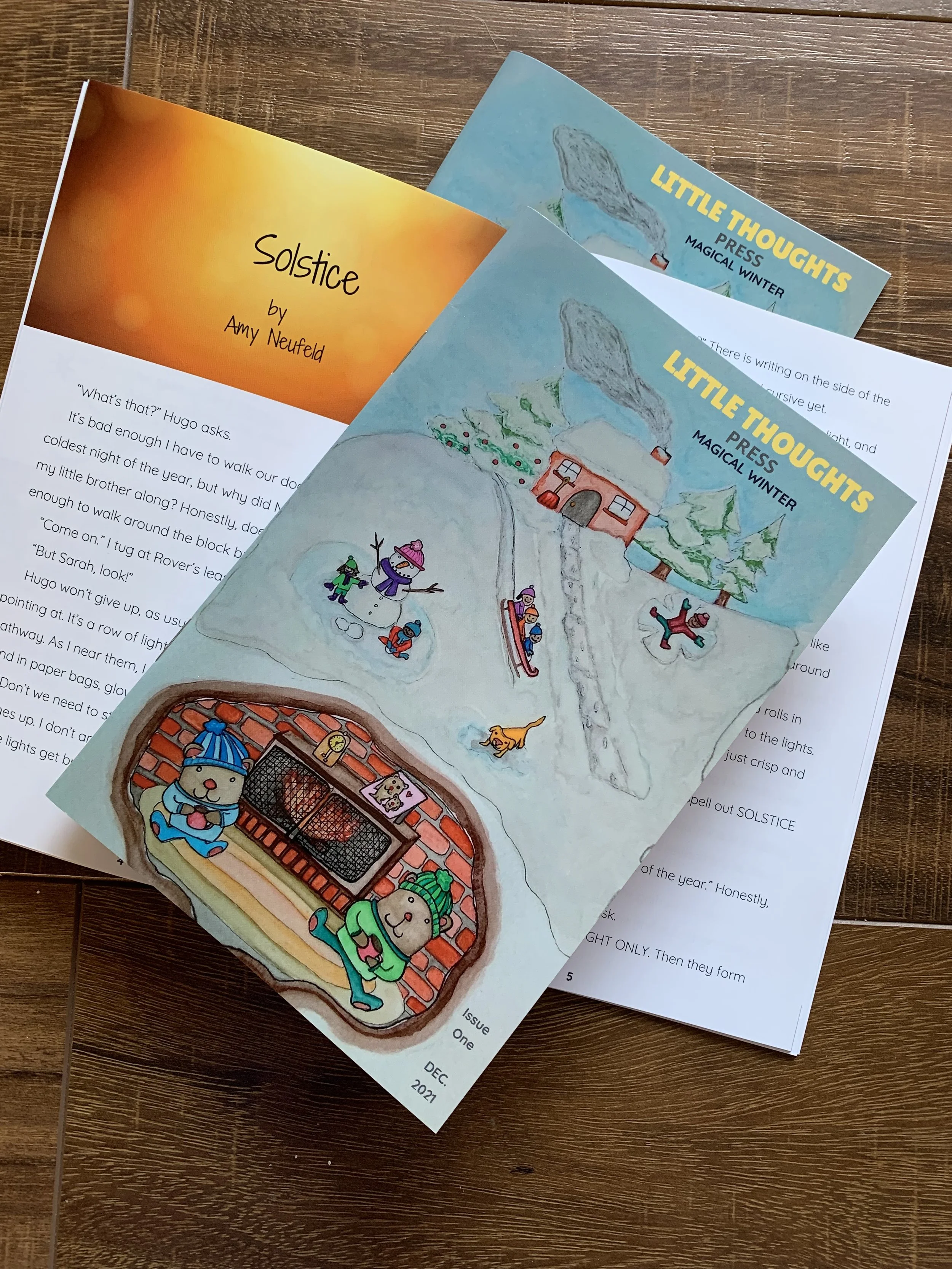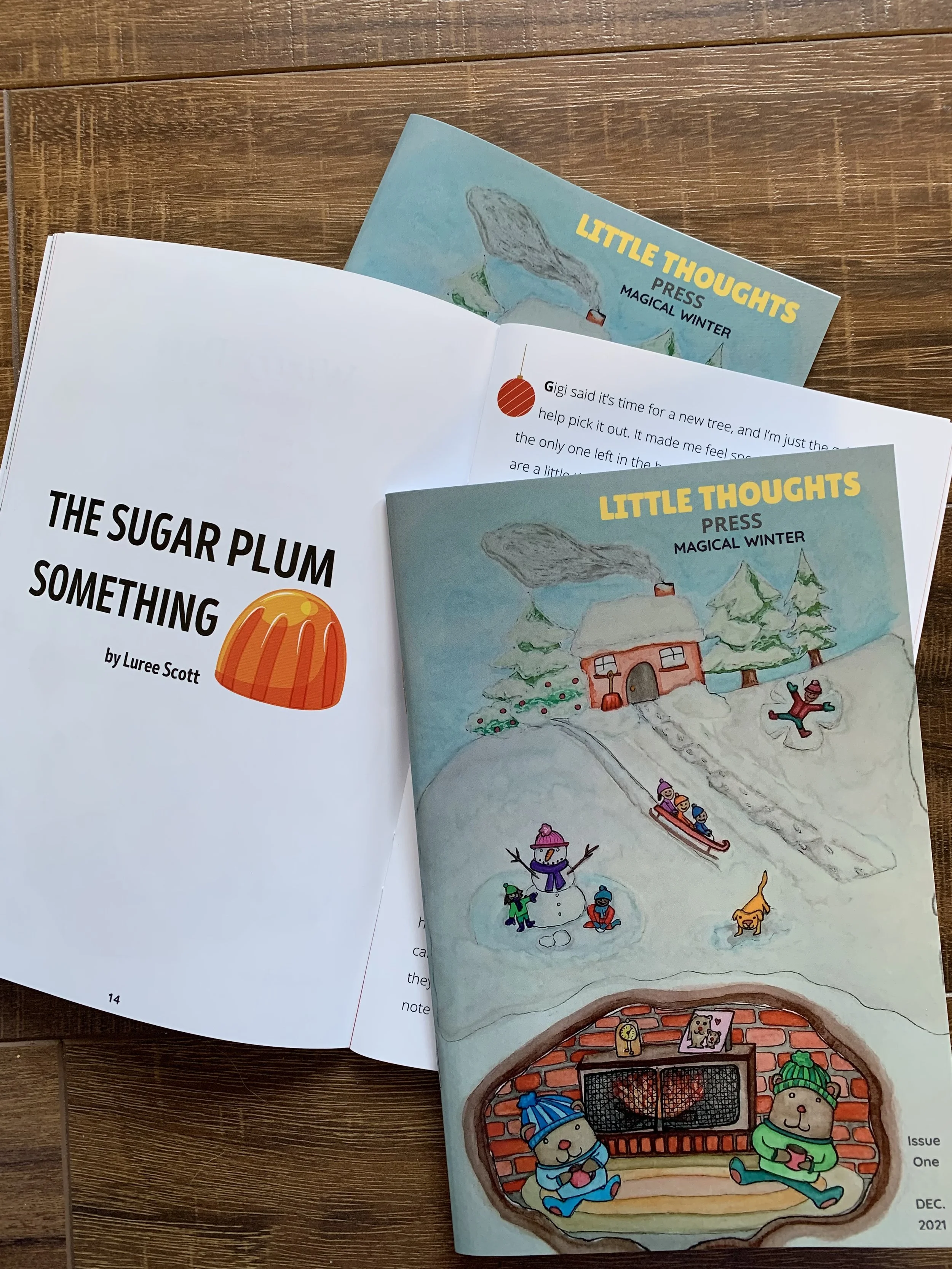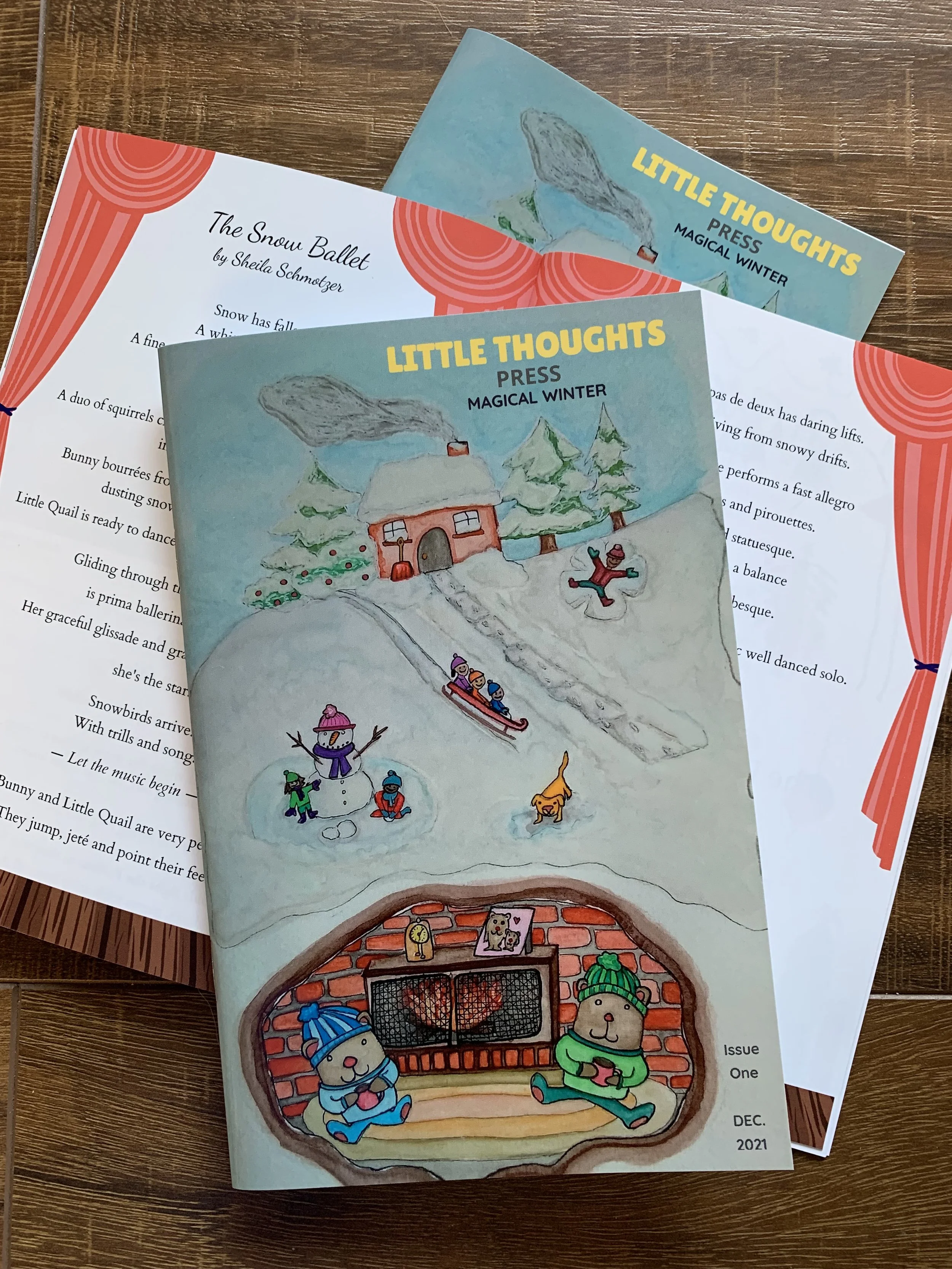When she was nine and living in Arkansas, Carrie read The Call of the Wild, leading to a failed attempt to turn her dachshund and beagle into sled dogs. But author Jack London did succeed in inspiring her to create stories and share them. When procrastinating from writing, you'll find Carrie collecting fun words such as "collywobbles" and "conundrum" in notebooks while doodling in the margins.
Carrie’s poems, “Once A House,” “The Trash Bandit,” and “The Moth,” are part of Little Thoughts Press Issue Two: Natural Wonder.
Little Thoughts Press: You used to be a professional photographer. Between light, composition, and focus, there's a lot of careful crafting taking place in photography. In what ways do you think your photography background has influenced your approach to writing?
Carrie Karnes-Fannin: What a great question! I could talk all day on this topic, but I'll try to keep my answer short. LOL.
Photography taught me to play with arrangements and find joy in editing.
When framing a picture, you compose a line for the eye to follow, leading the viewer to see the story of each image. Rick Sammon often says, "Composition is the strongest way of seeing." The choices you make as you press the shutter—where to stand, what to include in the frame, what to leave out—are all in service of creating the best story.
I've learned it's much the same in writing.
We might say, "composition is the strongest way of telling." There are many ways we could write any story. But which point of view we choose and how close it will be, what we tell the reader, what we leave out—we use these choices to compose the most compelling story we can.
Little Thoughts Press: Your poem, "Once A House," is a beautiful reflection on the relationship between people and the natural world. What inspired you to write this piece and what message do you hope young readers take away from it?
Carrie Karnes-Fannin: Natalie Goldberg, the author of Writing Down the Bones, talks about drawing from our "compost," as it were while writing. While the initial spark was a photo of a centuries-old house (the writing prompt for a contest), this poem mainly grew from my childhood memories.
As a free-range kid of the 70s and 80s, my dog and I wandered the woods frequently. We'd come across the ruins of old fallen-down houses from time to time. Even when I was a kid, I've always been fascinated by time and our place in its stream. Exploring the lonely chimneys and crumbling foundations broken apart by tree roots, I imagined who'd once lived there and the lives they'd led.
In some small way, I'd love for the poem to spark a young reader's curiosity about our connections to all the lives—human and otherwise—who came before and will come after our own.
Little Thoughts Press: Issue 2: Natural Wonder is all about celebrating nature. Do you have a favorite spot in nature or a place you have visited where the wonder of nature was on full display?
Carrie Karnes-Fannin: A year into the pandemic, we moved to the foothills of the Appalachians in northern Georgia. Beavers, flocks of geese and ducks, more turtles and fish than you can count, and one lone Great Blue Heron live on and in the small lake at the edge of our backyard. So right now, my favorite nature spot is the view out my kitchen window. It's pretty cool.
Little Thoughts Press: What initially drew you to writing kid-lit and what do you find most challenging and rewarding about writing for a young audience?
Carrie Karnes-Fannin: Until four or five years ago, my writing consisted of funny posts on social media, essays about family stories, and the awkward and terrible start of a historical novel. I didn't pursue writing kid-lit until an ice storm.
Trapped at home, I scrolled online, admiring pictures of my niece's new puppy. The words, "Spike the Dog-Dog was born on a cool fall day…" came and wouldn't leave. I had to get the story down to get it out of my head.
After writing and creating cut-paper illustrations and having it all bound, picture books hooked me into writing kid-lit. I had no idea how hard picture books were back then, but I fell in love with the storytelling synergy between art and words.
A few weeks later, I signed up for my first kid-lit writing class, led by the amazing Laurel Snyder, and I haven't stopped working on my craft since. We kid-lit creatives have the great privilege of being a part of a child's introduction to the world of stories. It's heady stuff.
There's a real challenge in working to reenter a child's mindset and see from their perspective. But seeing through a kid's fresh eyes—that's also the reward.
Little Thoughts Press: Which kid-lit authors and books were your favorites growing up?
Carrie Karnes-Fannin: S.E. Hinton's The Outsiders, Scott Odell's Island of the Blue Dolphins, and Katherine Patterson's Jacob I Have Loved are three titles that immediately spring to mind. I read each multiple times!
Looking at that list now, I see a theme of longing and searching for one's place in the world running through these stories. It's incredible how such a universal experience can feel so lonely. Thank goodness we have books to help us find the way.
Little Thoughts Press: What advice would you give to young writers?
Carrie Karnes-Fannin: In addition to reading widely and writing like no one's watching, my advice would be to make a lot of compost.
Get out and create as many experiences as you can. Explore other people's lives and memories by asking questions and listening to the answers. Read, write, see, do—make your life's compost pile huge. Your memories may take a few years to become rich soil for imagination, but trust they will.
Little Thoughts Press: Is there anything else you wish I had asked? Any upcoming projects, publications, or other news you'd like to share?
Carrie Karnes-Fannin: I'm currently working on several projects. One is an early middle-grade novel influenced by the absurd humor of one of my favorite books, Douglas Adams' masterpiece The Hitchhiker's Guide to the Galaxy.
Another is a humorous picture book about a fairytale superfan frog. Gort hops off on a quixotic quest inspired by the stories he's read. Everything goes terribly wrong in all the right ways for him. I'm not sure what sort of happy ending our froggy hero might find, but I'm having fun on the journey.
Find Carrie and more of her work on Twitter, or via her website.











